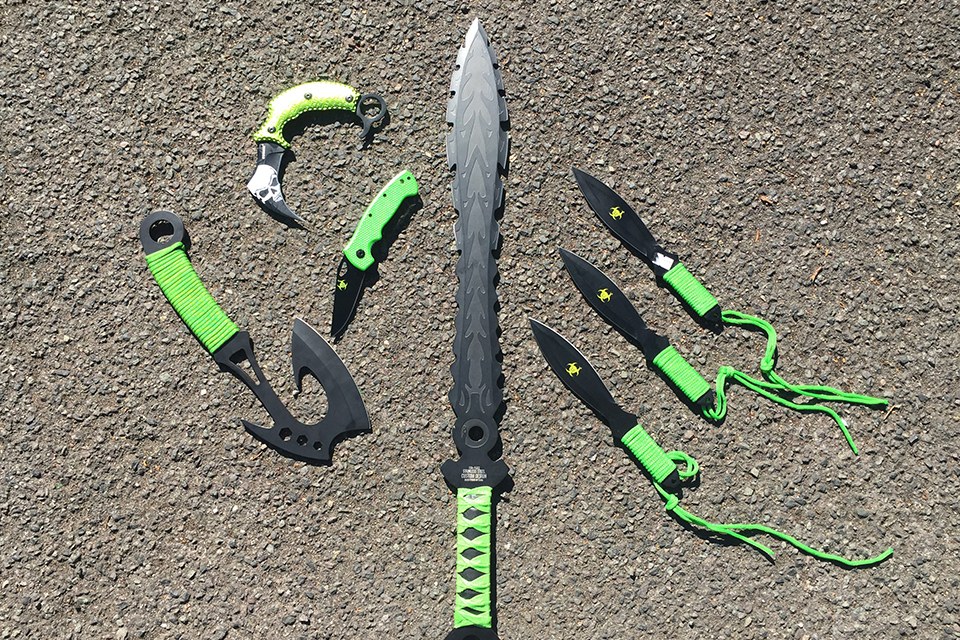Introduction:
In recent years, the popularity of zombie-themed entertainment has surged, giving rise to a unique subculture that spans literature, movies, and even practical skills such as zombie knife combat techniques. While the concept of zombies might seem like pure fiction, enthusiasts are increasingly drawn to the idea of mastering the art of defense against these imaginary foes. This article explores the intriguing world of zombie knife combat techniques, delving into its origins, the evolution of the art, and the practical applications of these skills in the real world.
I. The Origins of Zombie Knife Combat Techniques:
- Cultural Influences: Zombie knife combat techniques find their roots in various cultural influences, including horror fiction, movies, and video games. The idea of a zombie apocalypse, where the dead come back to life and threaten the living, has captivated audiences for decades. From classic films like George A. Romero’s “Night of the Living Dead” to contemporary television series like “The Walking Dead,” the zombie genre has left an indelible mark on popular culture.
- Martial Arts Integration: As the interest in zombie culture grew, martial artists began integrating elements of zombie defense into their training routines. Traditional martial arts, such as Kali, Eskrima, and Krav Maga, were adapted to include techniques specifically designed to counter the unique challenges posed by a zombie attack. The result was the emergence of a distinct sub-discipline within the realm of self-defense.
II. The Evolution of Zombie Knife Combat Techniques:
- Weapon Selection: A key aspect of mastering zombie knife combat techniques is understanding the importance of weapon selection. Enthusiasts often choose knives with specific features, such as a serrated edge for better cutting through obstacles or a sturdy handle for improved grip. The selection process involves considering factors like blade length, material, and overall functionality in a simulated zombie encounter.
- Movement and Footwork: Zombie knife combat techniques emphasize agility and strategic movement. Practitioners learn how to navigate through crowded spaces, simulate escape scenarios, and maintain situational awareness. This aspect of the training not only enhances physical fitness but also hones mental alertness, essential skills for surviving a hypothetical zombie apocalypse.
- Targeting and Striking Techniques: Precision is crucial when practicing zombie knife combat techniques. Techniques are designed to incapacitate an opponent efficiently, targeting specific areas such as the brain or limbs. Striking techniques may include precise stabs, slashes, and quick maneuvers to create distance. The focus is on maximizing the effectiveness of each movement while minimizing the risk of injury to the defender.
III. Practical Applications in the Real World:
- Self-Defense and Personal Security: While the concept of a zombie apocalypse remains fictional, the skills acquired through zombie knife combat techniques have practical applications in real-world self-defense scenarios. The emphasis on quick reflexes, strategic thinking, and efficient use of a knife can empower individuals to protect themselves in emergency situations.
- Emergency Preparedness: Beyond self-defense, the training associated with zombie knife combat techniques fosters a sense of emergency preparedness. Enthusiasts often adopt a survivalist mindset, learning valuable skills like first aid, navigation, and basic survival techniques. This holistic approach ensures that practitioners are not only equipped to handle imaginary zombie threats but also real-world emergencies.
- Community Building: The subculture surrounding zombie knife combat techniques has led to the formation of communities and training groups. Enthusiasts come together to share knowledge, refine their skills, and build a sense of camaraderie. These communities provide a supportive environment for individuals passionate about self-defense and emergency preparedness.
IV. Critics and Controversies:
- Ethical Concerns: Critics argue that the emphasis on zombie knife combat techniques can glorify violence and promote a culture of fear. Some believe that focusing on hypothetical scenarios distracts individuals from more immediate and tangible threats, such as everyday crime or natural disasters.
- Legality and Safety: Another concern centers around the legality and safety of practicing knife combat techniques. Critics argue that the skills acquired may be misused or pose risks if practiced without proper supervision. Additionally, the use of realistic-looking zombie targets in training may raise eyebrows and lead to potential legal issues.
Conclusion:
Zombie knife combat techniques may have originated from the realms of fiction, but their evolution into a practical skill set demonstrates the adaptability of martial arts and self-defense disciplines. The subculture surrounding these techniques not only provides a unique form of entertainment for enthusiasts but also offers valuable lessons in self-defense, emergency preparedness, and community building.
While critics raise ethical concerns and question the practicality of preparing for a zombie apocalypse, proponents argue that the skills acquired through this unique form of training can have real-world applications. Whether it’s enhancing personal security, fostering a sense of community, or instilling a mindset of emergency preparedness, zombie knife combat techniques continue to attract individuals seeking a distinctive and engaging approach to self-defense. Ultimately, whether one is drawn to the allure of fictional scenarios or the practical benefits of preparedness, the world of zombie knife combat techniques remains a captivating and evolving aspect of the martial arts landscape.
